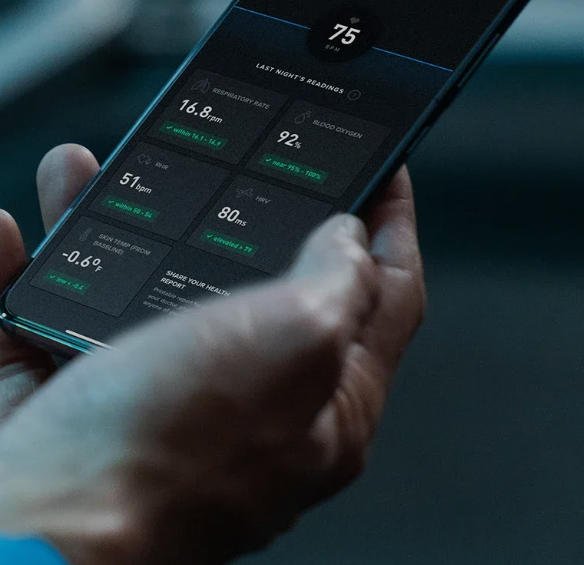At what point do wellness insights become medical devices, and who gets to decide? Wearable giant Whoop says it’s fighting for access to personal health data. The FDA says it’s enforcing the law
A regulatory clash between Whoop and the U.S. Food and Drug Administration could force a reckoning over how far wellness tech can go before crossing into medical territory.
The wearable company, whose newest global ambassador and investor is soccer star Cristiano Ronaldo, is pushing back against a warning from the FDA over its blood pressure insights tool. On Monday, the agency issued a warning letter to the Boston-based company, asserting that its Blood Pressure Insights (BPI) feature cannot be legally marketed without regulatory clearance. The agency said BPI qualifies as a medical device under federal law and lacks required premarket authorization.
Whoop founder and CEO Ahmed responded in a pointed LinkedIn post Wednesday, calling the FDA’s move “misguided” and warning that it undermines both innovation and consumer access to personal health data.

“We’re not backing down,” Ahmed wrote, adding that BPI is accurate, non-invasive and clearly labeled as not for medical use. “It does not diagnose any condition. In fact, anyone accessing the app is required to go through an in-depth onboarding where they acknowledge that they know the device should not be used for medical purposes.”
Ahmed also criticized the FDA’s position that any display of blood pressure data, regardless of disclaimers, requires regulatory approval.
“That’s like saying your wearable shouldn’t show your heart rate because someone might think they have tachycardia if it’s too high,” he wrote.
FDA: Estimating Blood Pressure Still Counts
At the core of the dispute is whether estimating blood pressure (even with disclaimers) constitutes a medical function under FDA rules. In its letter, the agency made clear it believes it does.
“Based on FDA’s evaluation of BPI’s intended use, the product is intended to provide a measurement or estimation of a user’s blood pressure, which is inherently associated with the diagnosis of hypo- and hypertension,” the FDA wrote. “It is therefore intended for use in the diagnosis of a disease or other condition, or in the cure, mitigation, treatment or prevention of disease.”
The FDA pointed to Whoop’s own language on its website, including references to “delivering medical-grade health and performance insights.” The agency also flagged BPI’s design and color-coded readings (green, yellow, and orange to indicate target blood pressure ranges) as potentially reinforcing a diagnostic interpretation.

“Even accounting for BPI’s disclaimers, they do not change this conclusion,” the agency wrote, “because they are insufficient to outweigh the fact that the product is, by design, intended to provide a blood pressure estimation that is inherently associated with the diagnosis of a disease or condition.”
Wellness or Medical?
Whoop maintains that BPI qualifies as a wellness feature, not a medical device. In his post, Ahmed cited the 21st Century Cures Act.
“Intended use is what matters — and the law agrees,” he wrote. “Tools that support healthy lifestyles and don’t diagnose or treat disease aren’t medical devices. Blood Pressure Insights meets that standard.”
Ahmed argued that presenting estimated blood pressure data is no different than displaying heart rate or respiratory trends, both of which are common features in wearables.
“Blood pressure is no different,” he wrote. “Peer-reviewed research confirms its relevance for wellness. There’s no reason to treat it differently.”
According to Ahmed, the company went “above and beyond” to design BPI responsibly. Users are informed that the feature is not for diagnosis, and estimates are based on passive overnight trends rather than clinical-grade readings, he explained.

“We even invited the FDA to review the feature, the science, and the disclaimers,” Ahmed wrote. “They declined to review all the details. Now they just want us to remove it. We are going to fight for our members’ access to their data.”
Ahmed also pointed to Whoop’s history of working with regulators, noting the company spent years obtaining FDA clearance for its ECG feature, which detects atrial fibrillation. “We follow the rules. Blood Pressure Insights, however, isn’t a medical device,” he wrote. He added that the dispute is specific to the U.S. and that BPI has been “received favorably” in more than 50 markets worldwide.
“We won’t let regulatory overreach dictate how people access their own health data,” he added.
Next Steps
The FDA has given Whoop 15 business days from receipt of the letter to submit a comprehensive written response outlining how it will address the alleged violations. The agency is requesting specific corrective actions, documentation of any fixes already made and a plan to prevent future issues. If changes will take time, Whoop must include a timetable and justification for any delays. The company may also submit legal or scientific reasoning if it believes BPI is not in violation.
If Whoop fails to respond adequately, the FDA warned it could pursue enforcement actions, including seizures, injunctions or civil penalties.
While the regulatory process plays out, Ahmed is casting the dispute as a broader fight over consumer rights to personal health data.
“This isn’t just about Whoop,” he wrote. “It’s about your right to understand your body and your health. It’s about giving Americans access to health and wellness data. We’ll fight this. Because the data can be measured accurately, and it belongs to you.”


